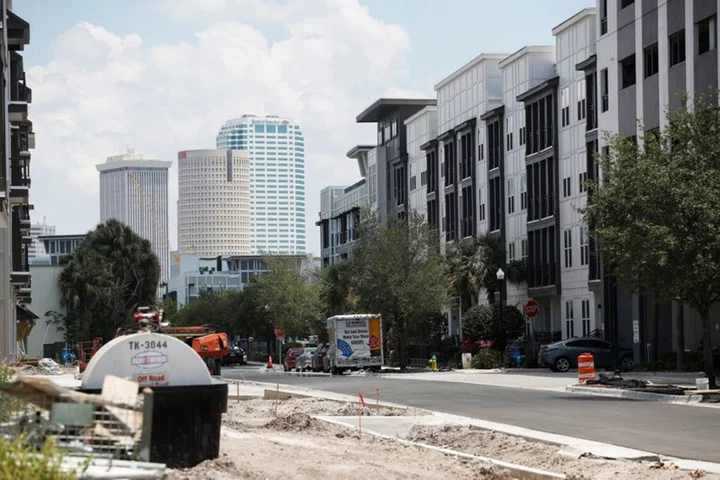By Safiyah Riddle
U.S. housing vacancy rates edged lower in the second quarter, according to a government report on Wednesday, intensifying a nationwide housing shortage that has propped up rents and home prices against the downward pressure of high mortgage rates.
The national homeowner vacancy rate was 0.7%, little changed from a record-low rate in the first quarter, the Department of Commerce reported, highlighting that U.S. housing availability rates have yet to recover from COVID-19 pandemic and remain near the lowest since the government began recording rates in 1956.
The rental vacancy rate, meanwhile, slipped to 6.3% from 6.4% in the first quarter, but was up from 5.6% a year earlier, marking some improvement in options for renters, although rents remained near record highs, according to the report.
The median asking rent in the quarter was $1,445, down from a record $1,462 in the first three months of the year, it added.
Housing vacancy plummeted at the start of the coronavirus pandemic more than three years ago, when demand for homes skyrocketed as many people were forced to stay home amid nationwide shutdowns.
Demand for rental properties also surged amid COVID-19, as historically high home prices edged many prospective buyers out of the market, spurring record-high apartment construction.
The median asking price for vacant homes for sale was $309,800 in the second quarter, down from a record $319,000 the quarter before, Commerce said.
In a separate report on Tuesday, CoreLogic estimated that home prices rose by just 1.6% in June, remaining near an 11-year low but rebounding slightly from May's reading, suggesting that recent home price cooling could be bottoming out with home prices still 41% above pre-pandemic levels.
The dearth of single-family homes could challenge the Federal Reserve's effort to bring home prices down with its 525 basis points of interest rate hikes since March 2022. Many homeowners secured lower mortgage rates locked in before the Fed hikes began and are now unwilling to buy a new home that would require more expensive financing.
"While the continued imbalance between buyers and sellers continues to pressure home prices, June’s annual bump in price growth echoes economic resiliency, a thriving U.S. job market and strong consumer spending," CoreLogic chief economist Selma Hepp said.
CoreLogic also found 40% of sales were all-cash transactions, indicating that demand could remain strong as long as current buyers have enough money to avoid high financing costs.
While single-family home building remains low, Commerce Department data last week showed permits for future construction rose to a 12-month high in June, suggesting that the shortage of previously-owned homes is fueling new construction.
(Reporting by Safiyah Riddle; editing by Susan Heavey)

